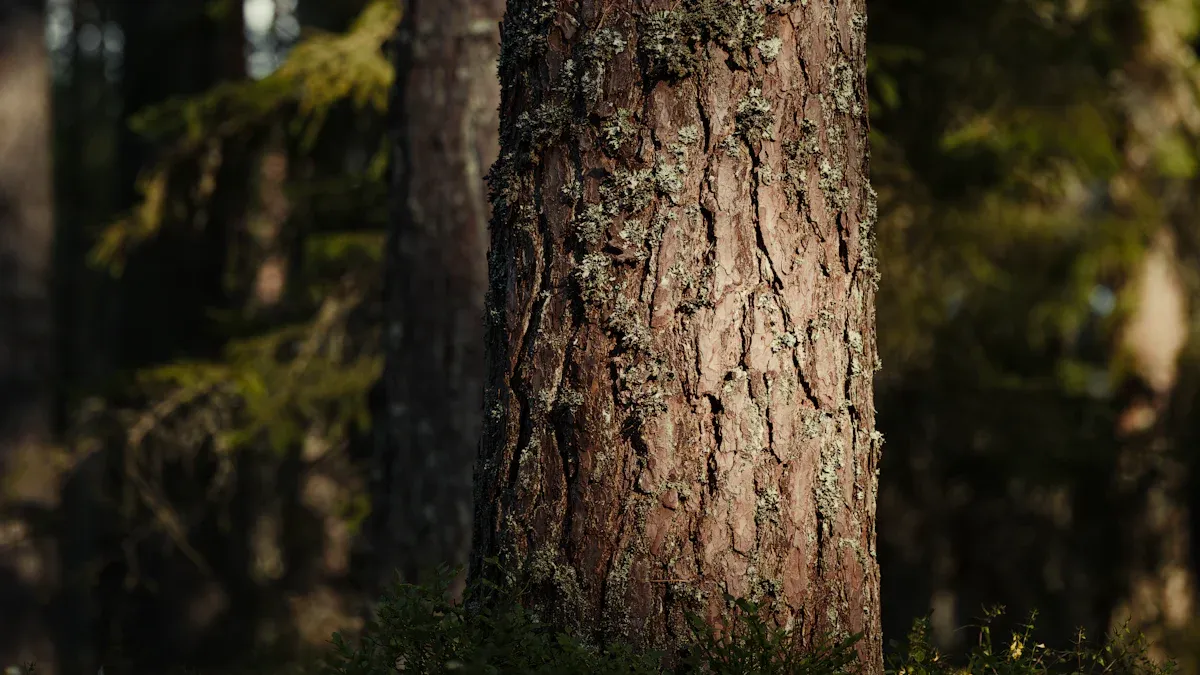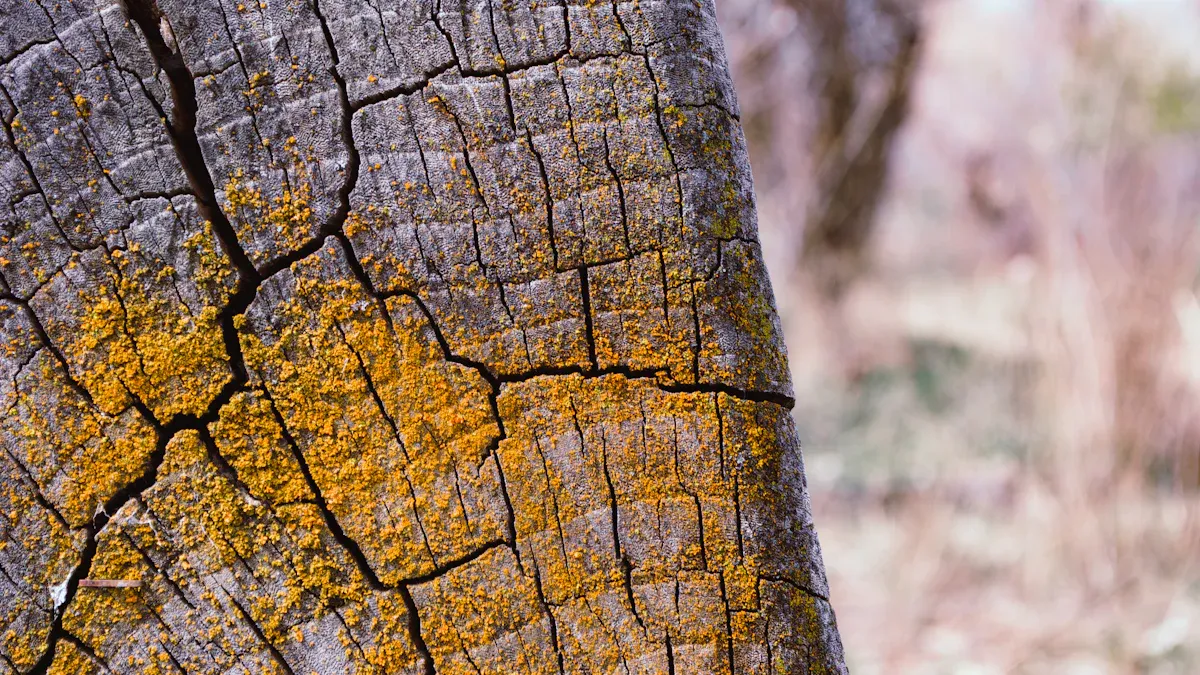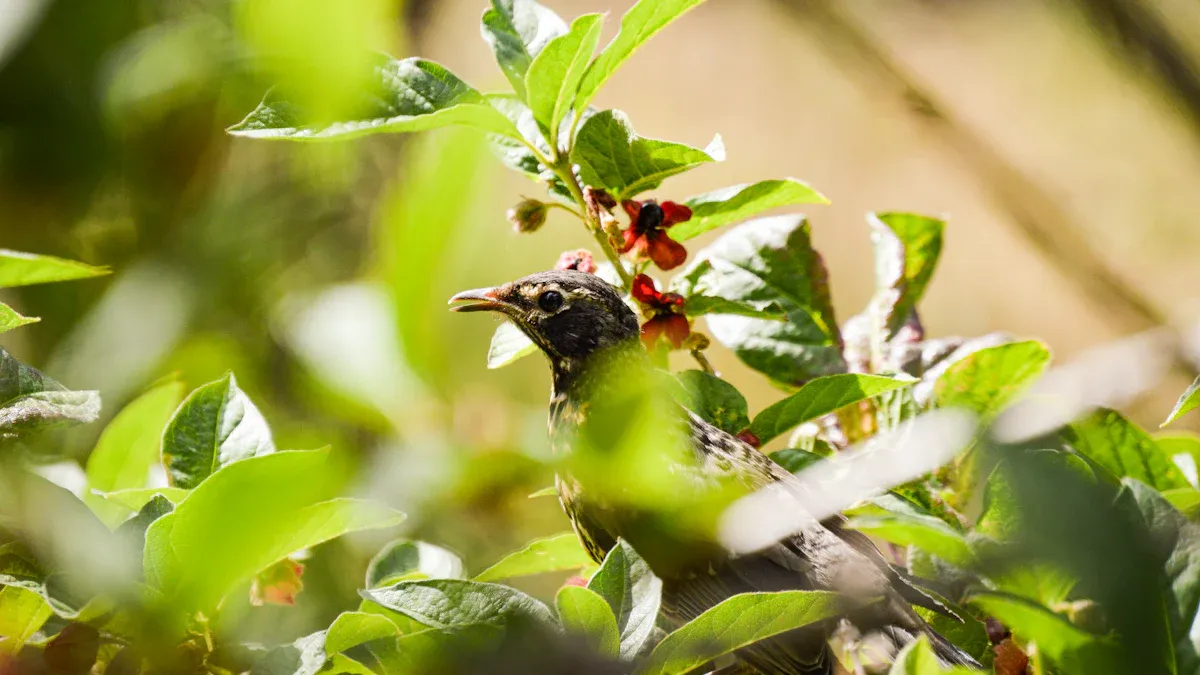
Bald cypress trees play a vital role in landscapes and ecosystems. Their buttressed trunks and extensive root systems prevent soil erosion. They offer critical habitats for diverse wildlife, supporting over 120 bird species, including barred owls and wood ducks. Additionally, more than 300 plant species thrive in cypress domes. These trees also help regulate water flow and quality in wetland areas by filtering sediments and pollutants. Recognizing bald cypress tree diseases early is crucial for maintaining their health and ensuring these benefits continue for future generations.
Key Takeaways
Regularly inspect bald cypress trees for symptoms like yellowing needles and bark cracks. Early detection helps prevent serious damage.
Maintain consistent soil moisture to prevent root rot. Water your trees weekly, especially during dry spells.
Implement cultural practices like mulching and proper irrigation to enhance tree health and reduce disease risk.
Use protective fungicides during wet conditions to manage needle blight effectively. Apply every 10 to 14 days for best results.
Monitor for pests and consider integrated pest management strategies to protect your trees while minimizing pesticide use.
Bald Cypress Tree Diseases Overview

Bald cypress trees face several diseases that can threaten their health. Two of the most common diseases are needle blight and root rot. Understanding these diseases helps you take action before they cause serious damage.
Needle Blight
Needle blight is a fungal infection that affects the needles of bald cypress trees. You may notice that the needles turn brown and fall off prematurely. This disease often occurs in humid conditions, where moisture lingers on the needles. If you see clusters of brown needles, it’s a sign that your tree may be suffering from needle blight.
Tip: Regularly inspect your trees for signs of needle blight, especially during wet seasons. Early detection can help you manage the disease effectively.
Root Rot
Root rot is another serious issue for bald cypress trees. This disease occurs in poorly draining soil, where excess moisture leads to the decay of roots. You might notice that your tree appears wilted or stunted in growth. In severe cases, the tree may even die. Root rot can be particularly problematic if your tree is planted outside its natural swampy habitat.
To help you understand the prevalence of these diseases, here’s a summary of common bald cypress tree diseases:
Disease/Pest | Description |
|---|---|
Chlorosis | Yellowing leaves due to iron deficiency, especially during dry periods. |
Drought Stress | Occurs when trees are planted outside their natural swampy habitat. |
Root Rot | Happens in poorly draining soil, leading to decay of roots. |
Spider Mites | Pests that can damage foliage. |
Cypress Beetles | Insects that infest and harm the tree. |
Needle Blight | A fungal infection affecting the needles of the tree. |
Twig Blight | Another fungal infection impacting the twigs of bald cypress trees. |
By recognizing the signs of needle blight and root rot, you can take steps to protect your bald cypress trees. Early intervention is key to ensuring their health and longevity.
Symptoms of Bald Cypress Tree Diseases

Yellowing and Bronzing
You should pay close attention to the color of your bald cypress tree’s needles. If you notice yellowing or bronzing, it may indicate early stages of disease. Here are some common symptoms to look for:
Needles turning yellow in the middle of the growing season can signal chlorosis. This condition often results from a lack of iron in the soil. If not corrected, it can lead to stunted growth and even branch die-off.
Needles that turn brown and drop during the growing season suggest drought stress. Bald cypress trees thrive in moist conditions. If the soil dries out, the tree may respond by shedding its foliage.
You might also see webbing around the needles, which indicates a spider mite infestation. These tiny pests feed on the tree’s foliage, causing further stress.
Symptoms | Probable Causes |
|---|---|
Needles Turn Yellow | Chlorosis – Caused by iron deficiency in the soil. |
Needles Brown; Drop in Season | Drought – Watering is essential during dry spells. |
Needles Yellowed | Mites – Look for pale foliage and fine webbing. |
Bark Cracks and Cankers
Bark cracks and cankers are other critical symptoms of distress in bald cypress trees. These issues can arise from various factors, including environmental stress and pest infestations. Here’s what to look for:
Cracks in the bark can indicate that the tree is under stress. This stress may come from drought, poor soil conditions, or extreme temperatures. If you see cracks, it’s essential to assess the overall health of the tree.
Cankers appear as sunken areas on the bark. They can be caused by fungal infections or physical damage. If you notice cankers, they may lead to further decay if not treated promptly.
Recognizing these symptoms early can help you take action to protect your bald cypress trees. Regular inspections and proper care can prevent minor issues from becoming severe problems.
Causes of Bald Cypress Tree Diseases
Environmental Stressors
Environmental stressors significantly impact the health of bald cypress trees. You should be aware of several factors that can contribute to disease development:
Extreme temperatures can weaken trees, making them more susceptible to diseases.
Nutrient deficiencies, such as a lack of iron and magnesium, can hinder growth and vitality.
Fluctuations in soil moisture levels are particularly harmful. Consistent moisture is crucial for preventing root rot. When moisture levels vary, the tree’s root system experiences stress, increasing the risk of disease.
To maintain healthy bald cypress trees, consider these practices:
Regular watering is essential, especially during dry spells. This helps keep the roots hydrated and strong.
Mulching can help retain soil moisture, further reducing the risk of root rot.
Planting in wet environments ensures consistent moisture levels, promoting healthy growth.
Pests and Insects
Pests and insects also play a significant role in the health of bald cypress trees. Various species can spread diseases and cause damage. Here are some common culprits:
Insect Species | Recognition | Contributing Factors | Management Recommendations |
|---|---|---|---|
Cypress Twig Gall Midge | Heavy, spongy galls on leaves; contains yellow-orange maggots. | Previous infestations of this insect. | Rake and destroy fallen leaves and galls; sprays can target adults. |
Mealybugs | Soft-bodied with a waxy covering; produces sticky honeydew. | Unknown for Baldcypress. | Predators like ladybug larvae can control infestations; caution with horticultural oils. |
By understanding these environmental stressors and pest threats, you can take proactive steps to protect your bald cypress trees. Regular monitoring and proper care will help ensure their health and longevity.
Treatment for Bald Cypress Tree Diseases
Chemical Treatments
You can manage bald cypress tree diseases effectively with chemical treatments. For needle blight, consider using protective fungicide sprays. Apply these sprays as new leaves emerge, especially during wet conditions. Reapply every 10 to 14 days for the best results. Additionally, you should focus on prevention through cultural practices. Here are some tips:
Water the trees without wetting the foliage during drought.
Provide proper nutrition through fertilization and mulching.
These practices help strengthen the tree’s defenses against diseases.
Cultural Practices
Cultural practices play a crucial role in maintaining the health of bald cypress trees. Regular pruning enhances air circulation and light penetration. Clean cuts promote quicker healing and reduce tree stress. Here are some key practices to consider:
Manage Irrigation: Prevent waterlogging, which can lead to root rot. Ensure adequate moisture levels to support tree health without excess water.
Mulching: Maintain a two- to three-inch layer of mulch around the base of the tree. This helps retain moisture and regulate soil temperature.
Seasonal Care: Inspect trees for winter damage in spring. Prune dead branches and apply fertilizer to promote growth. In summer, ensure consistent watering and check for signs of stress.
By implementing these cultural practices, you can significantly reduce the incidence of bald cypress tree diseases.
Integrated Pest Management
Consider using integrated pest management (IPM) strategies to improve the health of your bald cypress trees. Regularly monitor pest levels to inform your management decisions. Determine action thresholds to know when to intervene. Implement management tactics that reduce pesticide use while enhancing plant health. This approach allows for some pest populations, which is essential for biological control efforts.
By combining chemical treatments with cultural practices, you can effectively manage bald cypress tree diseases and promote healthy growth.
In summary, early identification and treatment of bald cypress tree diseases are crucial for their health and longevity. You should regularly inspect your trees for symptoms like yellowing needles or bark cracks. Implementing effective monitoring techniques, such as visual inspections and advanced remote sensing, can help you catch issues early.
To promote healthy growth, consider these key practices:
Maintain appropriate water levels to prevent drought stress.
Monitor salinity levels in the soil.
Water your trees at a rate of 0.6 inches per week during dry periods.
By taking these steps, you can ensure your bald cypress trees thrive for years to come. 🌳
FAQ
What are the signs of needle blight in bald cypress trees?
You can identify needle blight by observing clusters of brown needles that fall off prematurely. This often occurs in humid conditions.
How can I prevent root rot in my bald cypress trees?
To prevent root rot, ensure proper drainage in the soil. Avoid planting in areas where water tends to pool.
What should I do if I find pests on my bald cypress trees?
If you notice pests, inspect the tree closely. You can use insecticidal soap or introduce natural predators like ladybugs to control infestations.
How often should I water my bald cypress trees?
Water your bald cypress trees weekly, providing about 0.6 inches of water, especially during dry spells. This helps maintain healthy growth.
Can I treat bald cypress diseases with home remedies?
Some home remedies, like neem oil, can help manage pests and fungal infections. However, consult a professional for severe cases.


